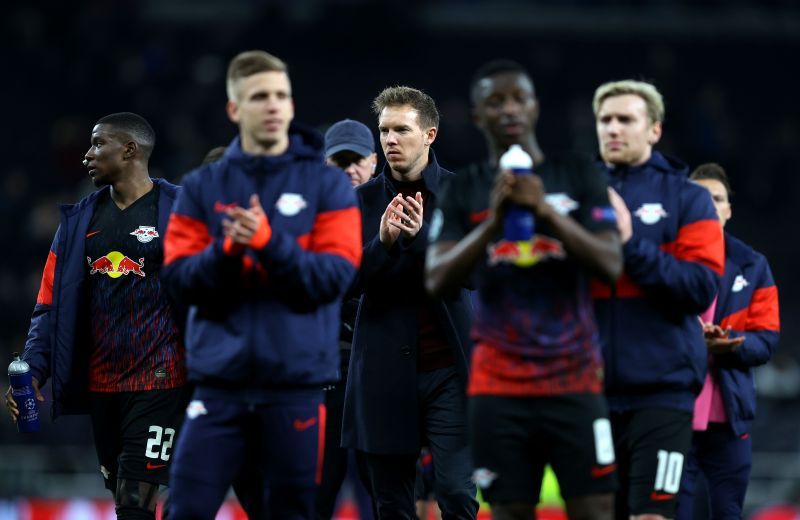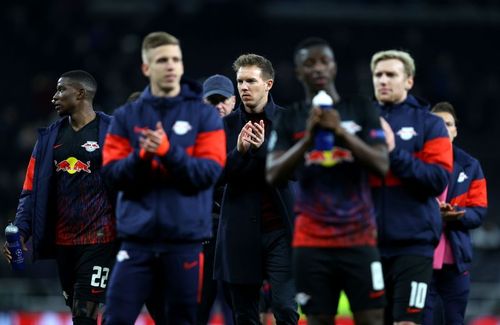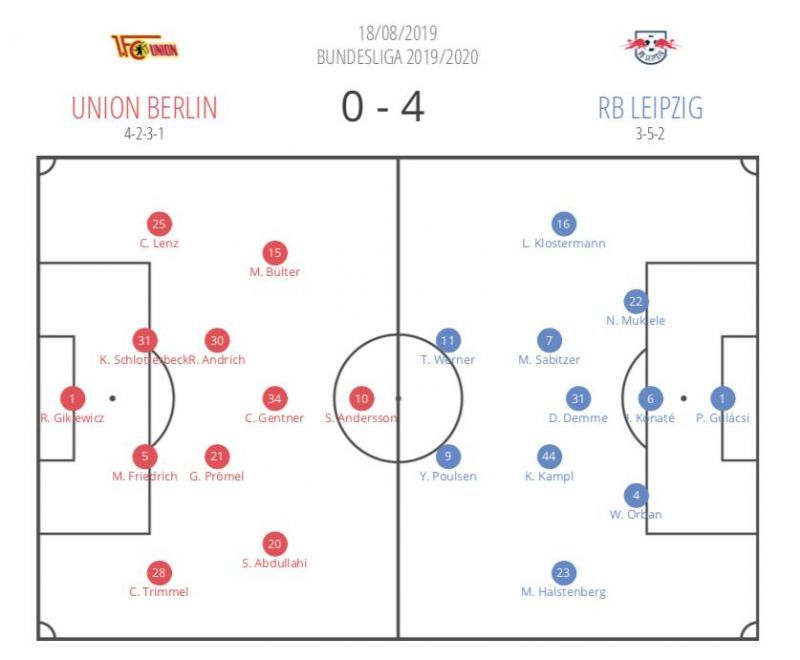
Decoding Julien Nagelsmann's tactics at RB Leipzig

There is no doubt that German club RB Leipzig have been playing one of the most attractive styles of football this season. This beautiful style of play has come through the combination of a really tactically sound coach and players who have clarity of thought regarding what their gaffer requires on-field.
Julian Nagelsmann has sort of been a revelation for German football in the past few seasons and has been drawing similarities to the kind of impact Jurgen Klopp had during his Dortmund days in the Bundesliga.
The 32-year-old is one of the youngest coaches in world football, and probably the youngest in the European top-flight.
Today, we take a look at Nagelsmann's tactics which has led the German team to many victories recently, and, most importantly, last night's away win at Tottenham Hotspur in the Champions League.
Also Read: Mourinho says Spurs stars are 'dead' after Leipzig loss
Formation and playing style

Nagelsmann usually switches between a three-man defence and a back-four depending upon the kind of opposition he is facing but sticks to a back-three for the majority of his matches. This gives Leipzig the extra man in defence while his wingers can fulfill both attacking and defensive duties.
The playing style of the ex-Hoffenheim coach is pretty clear - attacking the opposition vertically and pressing aggressively when out of possession. This enables the team to attack more efficiently while regaining the ball quicker from the opposition while defending.
Player instructions
In a three-man defence, the two wingers are usually full-backs with great crossing abilities. These wingers, usually Nordi Mukiele, Angelino, Lukas Klostermann or Marcel Halstenburg, move up higher on the pitch in the opposition half which creates gaps in the middle of the pitch as the opposing team tries to man-mark their opposition. The vertical attacking then works fluidly as the centrally fielded players can exploit the game through the middle.
Leipzig generally avoids aimlessly passing the ball sideways unless leading by a margin of 2 or more goals and the players only pass forward with intentions to go higher up the field.
Talking about the forwards and central attackers, either Yussuf Poulsen or Timo Werner usually falls back deeper to receive the ball from the midfield, while the other runs through the lines between the opposition defense. This creates a very high number of goal-scoring opportunities for the second-placed club in Bundesliga.
Another very interesting tweak by Nagelsmann is the use of double pivot in the central midfield who have a role of supporting the defence in case the opposition counter-attacks, as the full-backs usually operate in higher-up positions on-field.
This is a full-proof attacking and defensive tactical package deployed by Nagelsmann which makes it quite difficult for the opposition to play against Leipzig.
The players of the club also deserve a big mention too, as they need to have an excessively higher work rate to implement Nagelsmann's tactics on the field. The coach requires them to press high when not in possession and create space by clever movement when in possession.
It will be interesting to see where Nagelsmann ends up with his tactical masterclass at the end of the current season. Leipzig find themselves in comfortable positions in the Bundesliga (one-point gap with leaders Bayern Munich) and the Champions League Round of 16 (an away leg advantage over Tottenham Hotspur).
Also Read: Tottenham Hotspur 0-1 RB Leipzig: Hits and Flops | Champions League 2019-20